Creating Quizzes
Overview
Section titled “Overview”Quizzes are knowledge assessments that test users’ understanding of concepts covered in your lab. Unlike tasks that validate hands-on skills, quizzes evaluate conceptual knowledge through questions that require reasoning, recall, and decision-making. They help reinforce learning by prompting users to actively think about what they’ve learned rather than passively reading through content.
Quizzes support multiple question types; simple single-choice questions, multi-select and, text and number answers. This flexibility lets you assess understanding at different levels, from basic recall to application and analysis.
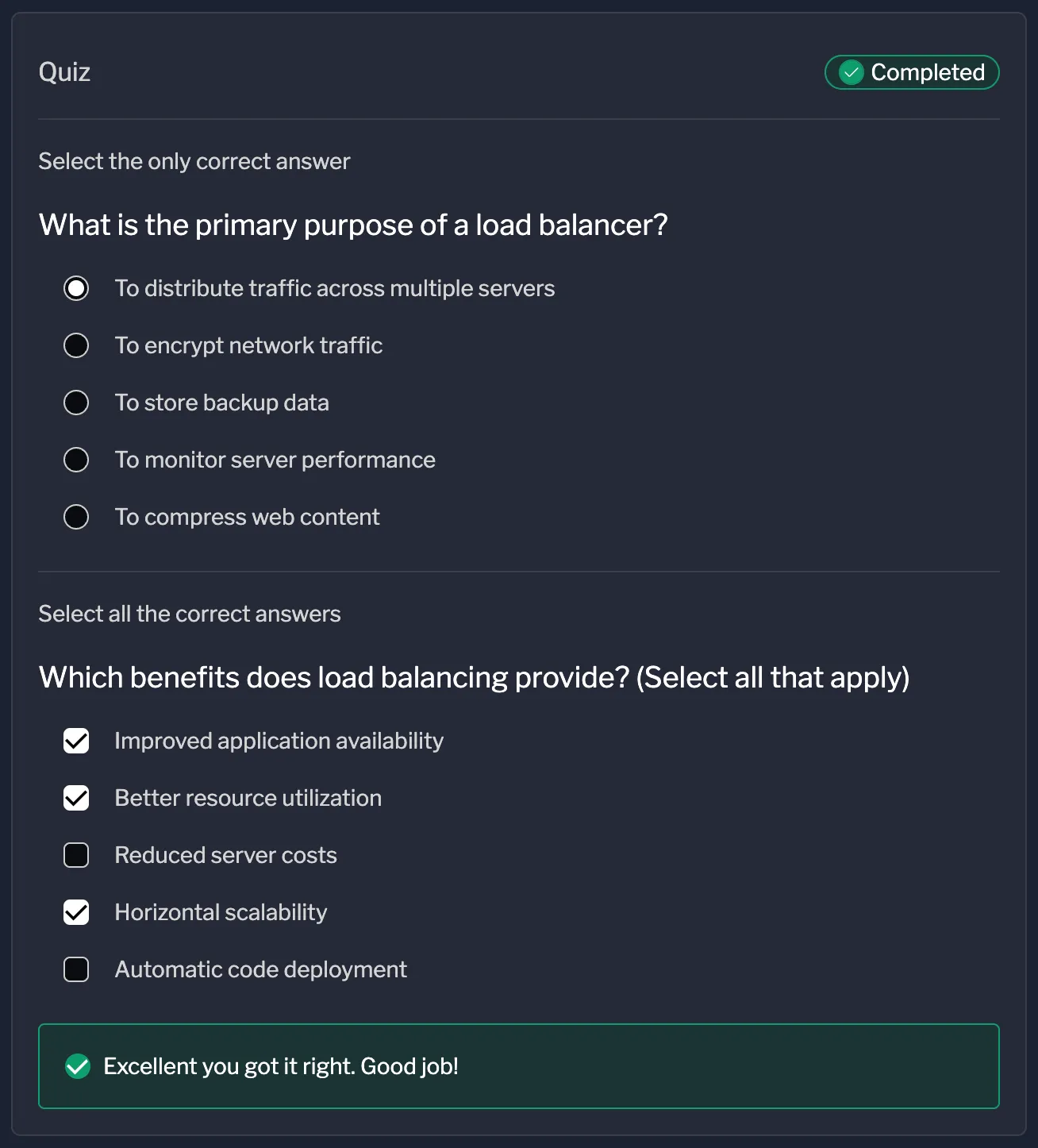
Creating a Quiz
Section titled “Creating a Quiz”Quizzes are created in the Activities tab of your lab. This is where you define your questions, configure quiz settings, and manage which pages use each quiz.
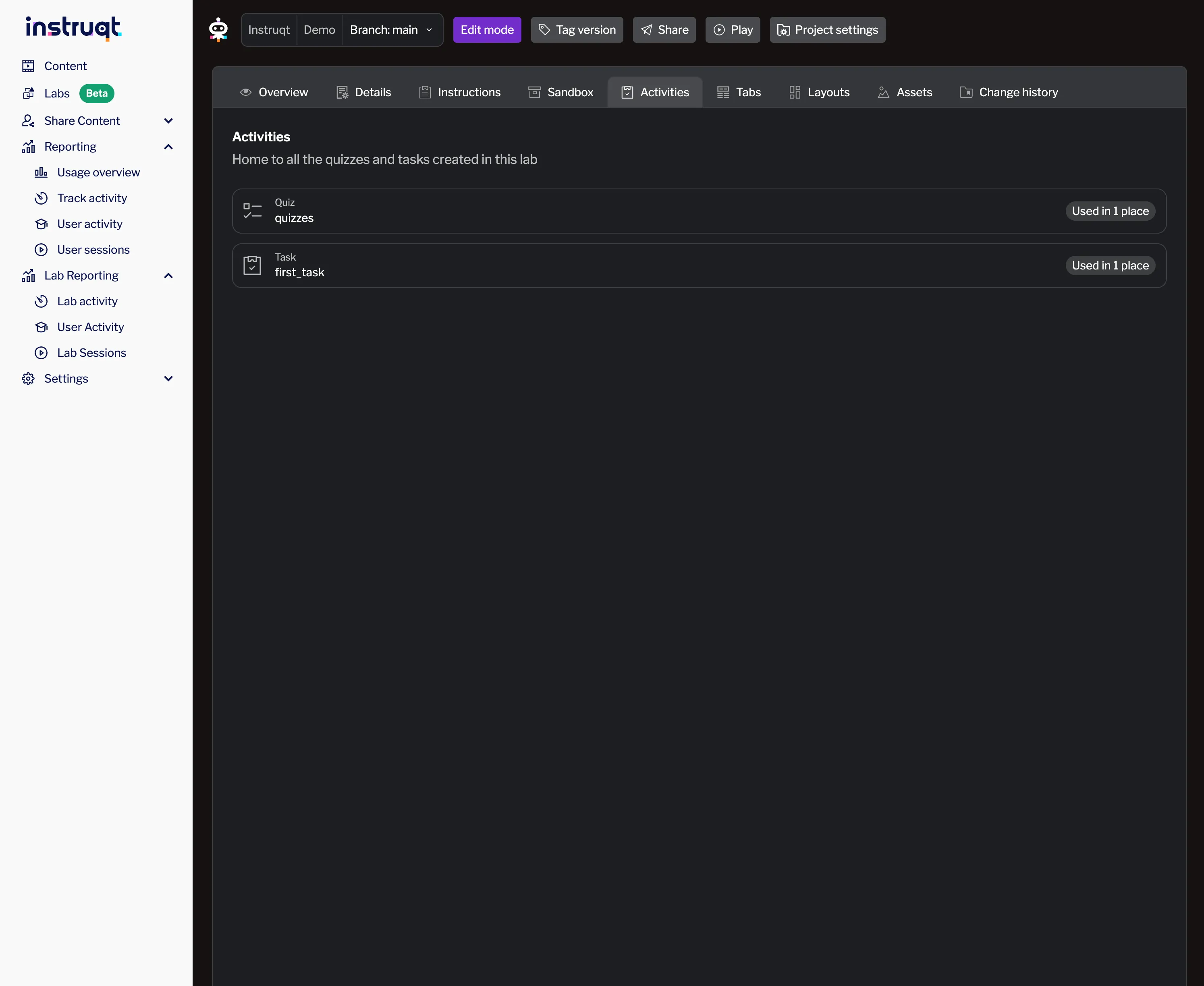
To create a new quiz, navigate to the Activities tab and click the Create new activity button and then choose Quiz.
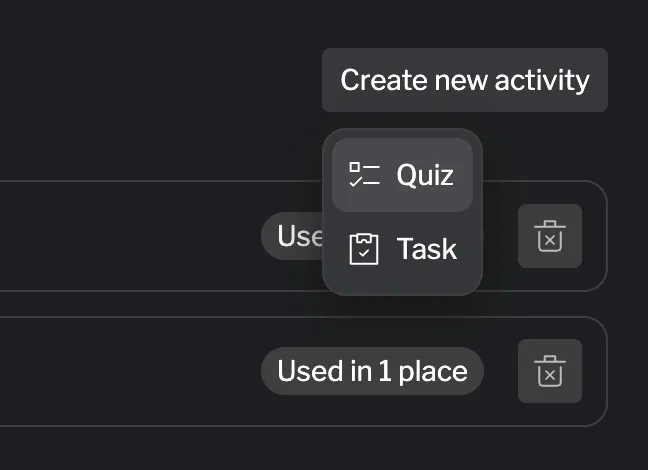
This opens the quiz creation drawer where you can configure all aspects of your quiz. When you’re done configuring your quiz, click the Create & add button to save it.
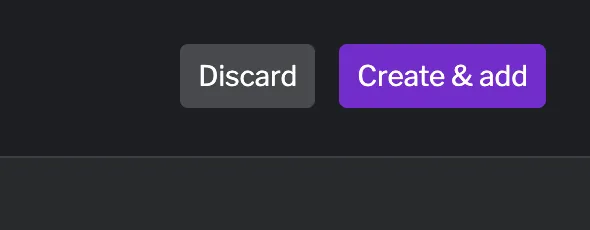
Quiz Details
Section titled “Quiz Details”The quiz drawer has several sections for configuring your assessment:
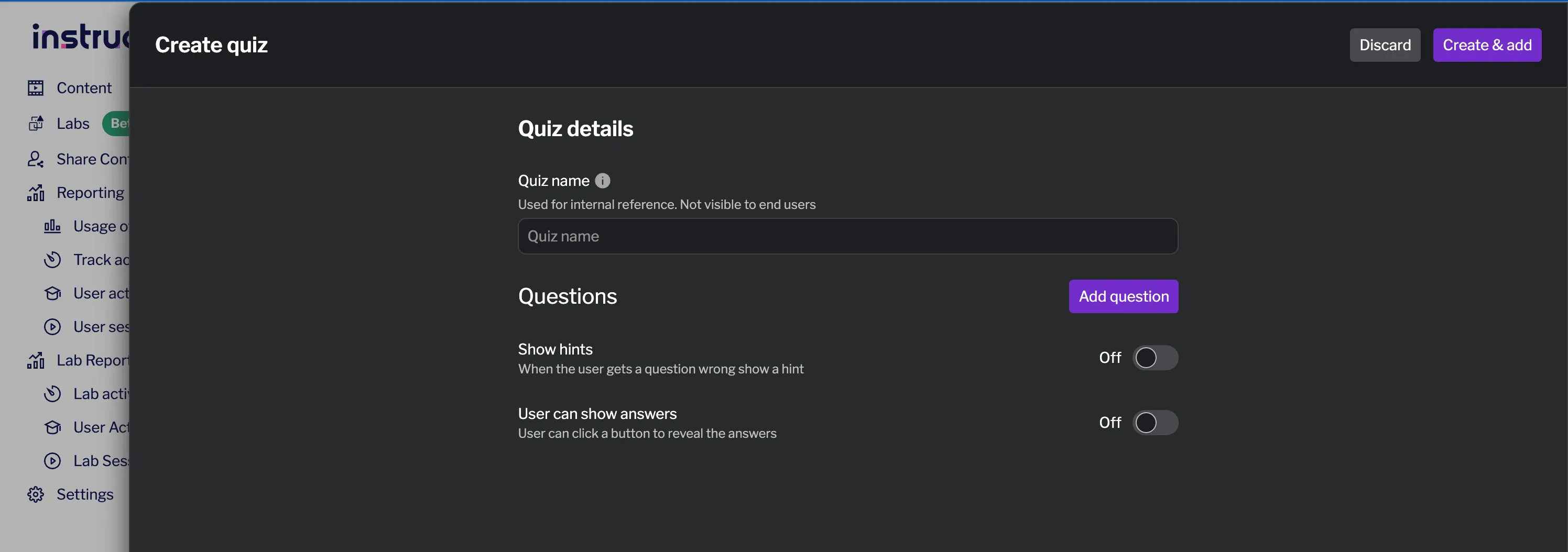
Quiz Name: An internal identifier used to reference this quiz in your lab configuration. Users never see this name. Use descriptive names like load_balancer_concepts_quiz or security_fundamentals_quiz.
Quiz names can use lowercase letters, numbers, hyphens, and underscores. They must:
- Begin and end with a letter or number
- Not contain consecutive hyphens or underscores
- Be unique (no duplicates allowed)
Questions: The heart of your quiz. You’ll add multiple questions here, each with its own type, text, and answer configuration. Questions are displayed to users in the order you define them. You can also reorder questions by dragging them in the list.
Quiz Settings: Configure how users interact with the quiz:
| Setting | Description |
|---|---|
| Show hints | When enabled, you can add hints to individual questions to guide users toward the correct answer without giving it away directly. Hints are served in order every time users attempt the question and fail. |
| User can show answers | Show answers to the user, allowing them to reveal correct answers after submission. |
Adding Questions
Section titled “Adding Questions”Click Add question to pick a type and create a new question in your quiz. Each question needs a name (internal reference), question text, and answers.
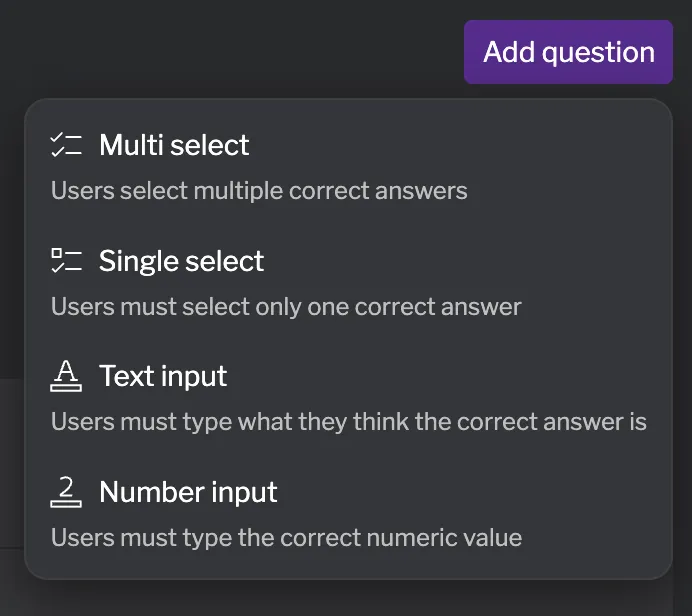
Question Types
Section titled “Question Types”Instruqt supports four question types to assess different kinds of knowledge:
- Multi select: Users select all correct answers from the options
- Single select: Users select one correct answer from multiple options
- Text input: Users type a free-form text response
- Number input: Users enter a number as their answer
Single select
Section titled “Single select”Single select questions present users with multiple options where only one is correct. This type is perfect for testing factual knowledge or basic understanding.
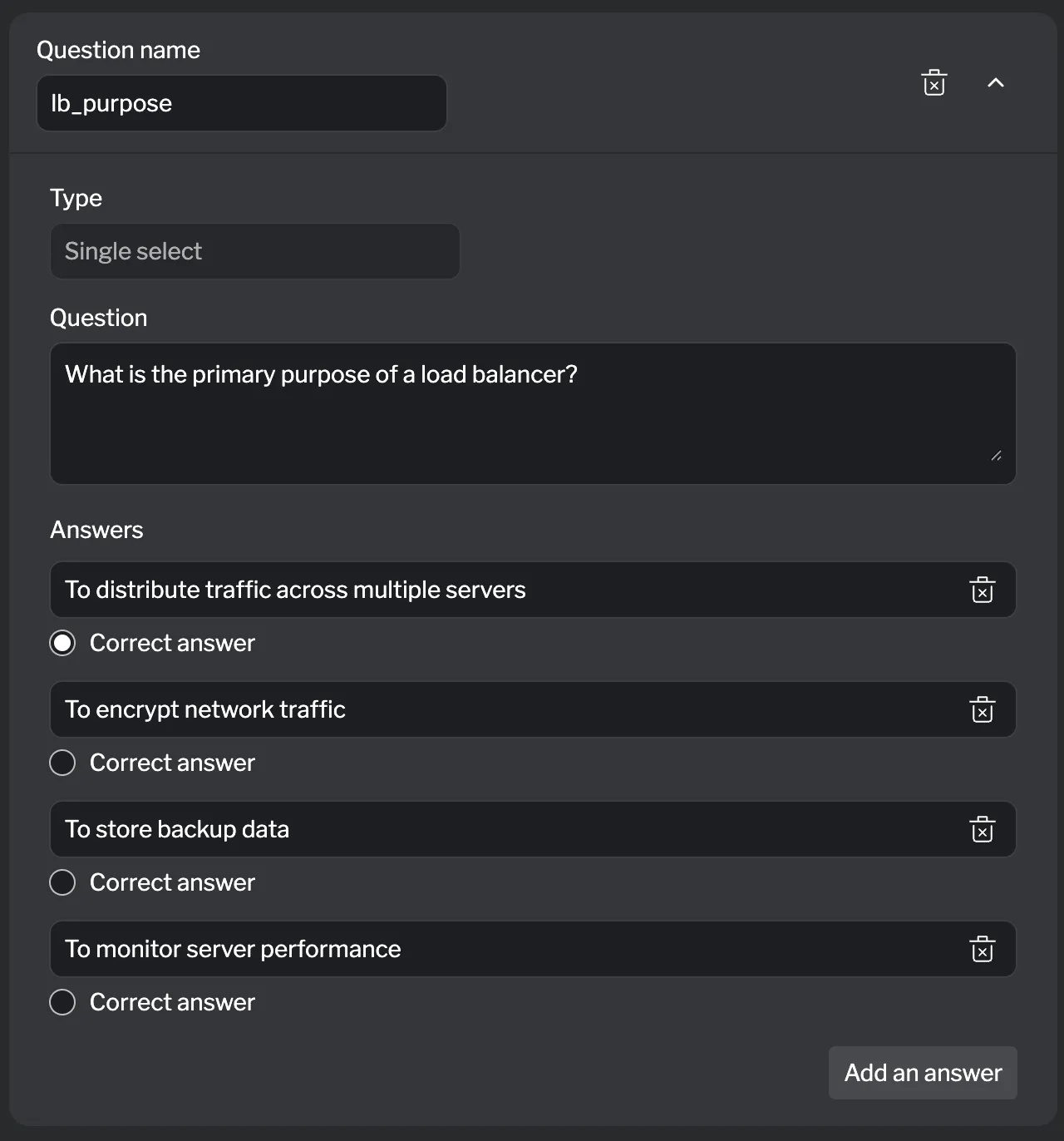
| Field | Description |
|---|---|
| Question name | Internal identifier for the question. |
| Question | The question text users will see. |
| Answers | List of possible options (add as many as needed). |
| Correct answer | Select which option is correct. |
Adding answers: Click “Add an answer” to create each option. Mark one option as the correct answer using the radio button or dropdown selector.
Multi select
Section titled “Multi select”Multi select questions allow users to select multiple correct answers from the available options. Use this when several statements may be true or when testing comprehensive understanding.
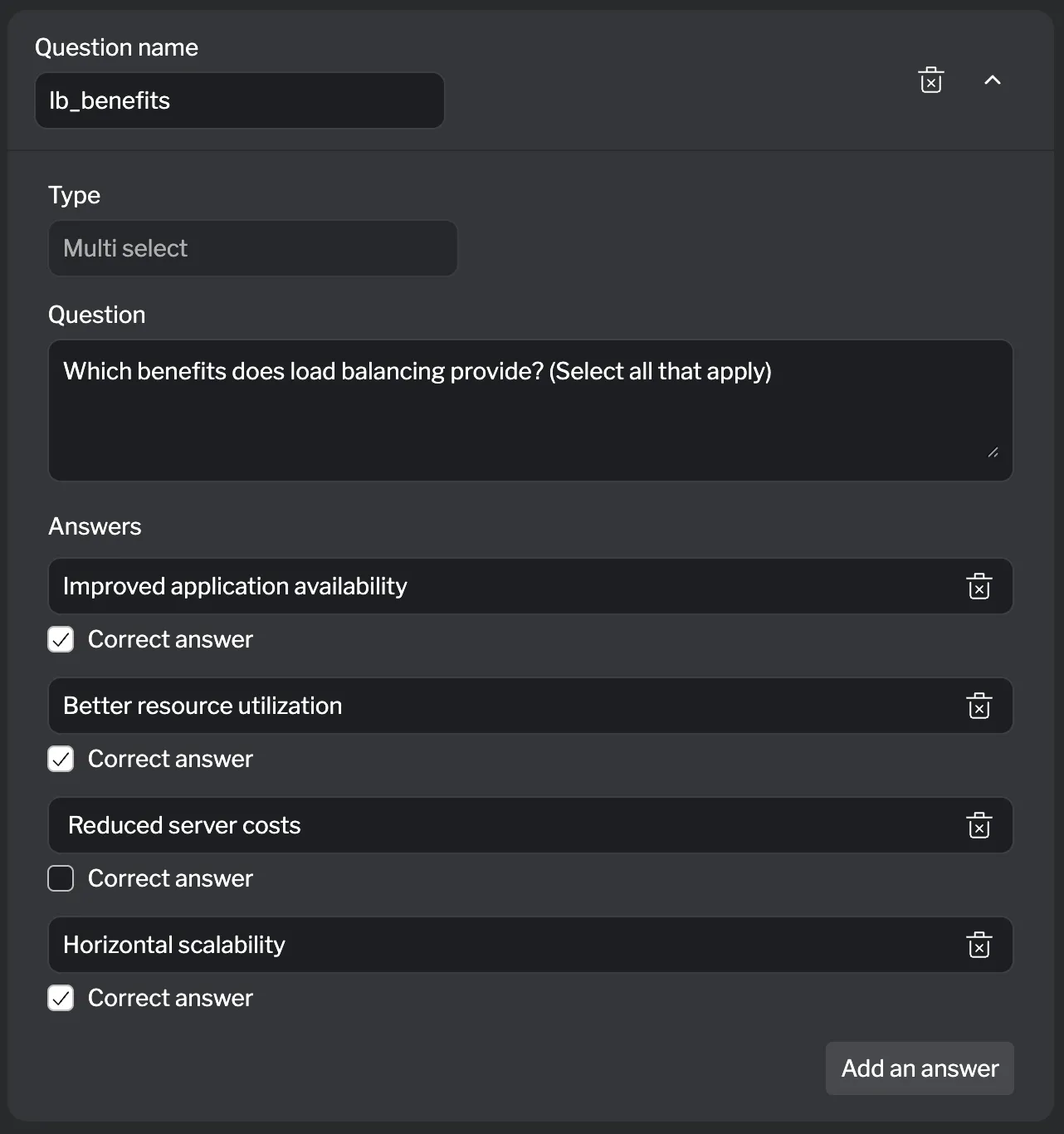
| Field | Description |
|---|---|
| Question name | Internal identifier for the question. |
| Question | The question text users will see. |
| Answers | List of possible options (add as many as needed). |
| Correct answers | Mark all options that are correct. |
Adding answers: Click “Add an answer” to create each option. Mark multiple options as correct by checking their boxes. Users must select all correct options to pass.
Text input
Section titled “Text input”Text input questions require users to type a text response that matches exactly (case sensitive). Use this for questions requiring specific answers like terminology, commands, or short factual responses. This question type is not suited for “explain in your own words” style questions since answers must match exactly.
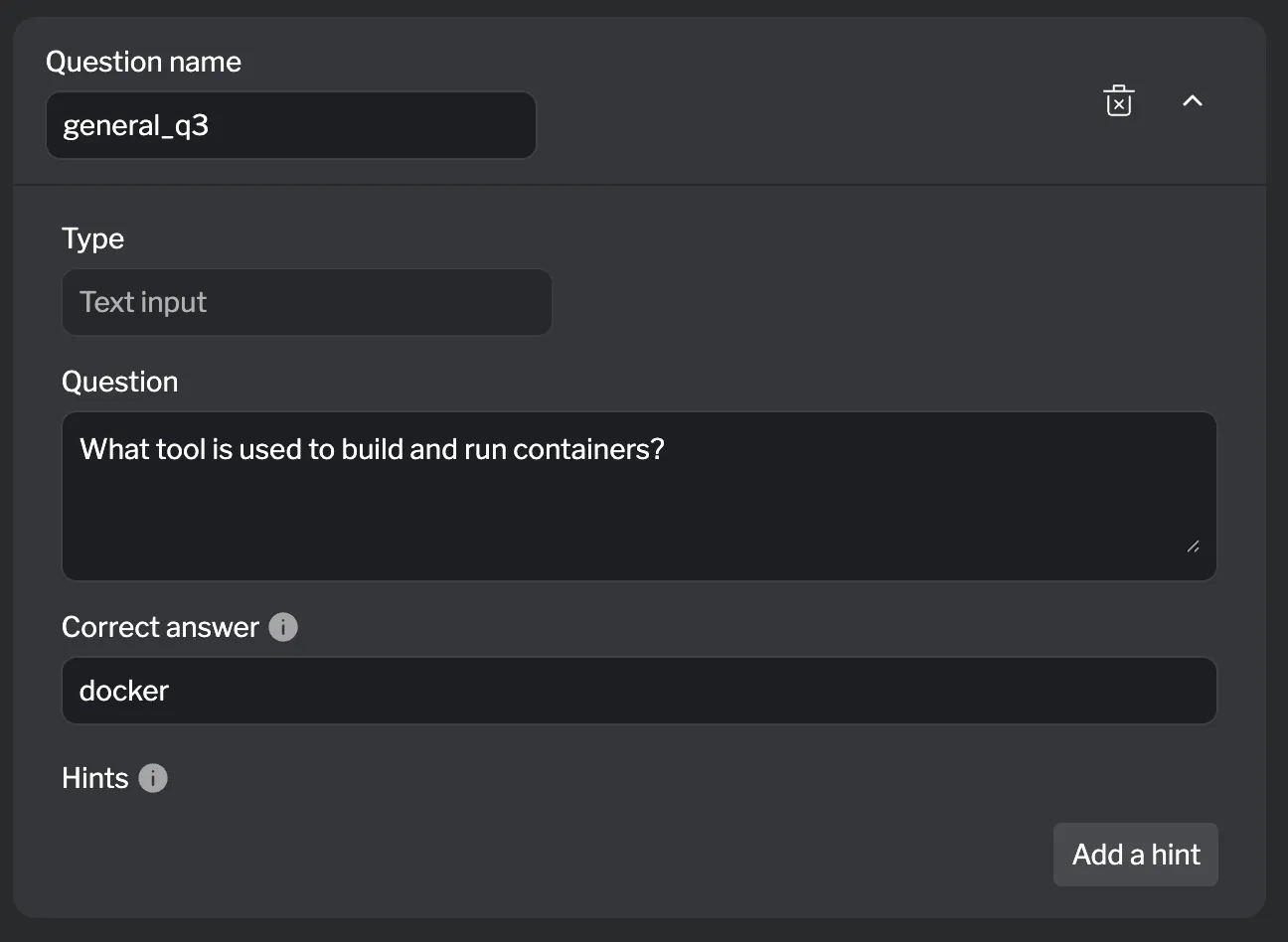
| Field | Description |
|---|---|
| Question name | Internal identifier for the question. |
| Question | The question text users will see. |
| Correct answer | The expected text answer (must match exactly, case sensitive). |
Adding answers: Enter the correct answer text. The user’s answer must match exactly (case sensitive) to be considered correct.
Number input
Section titled “Number input”Number input questions require users to enter a number. This type is useful for calculations, capacity planning, or any quantitative questions.
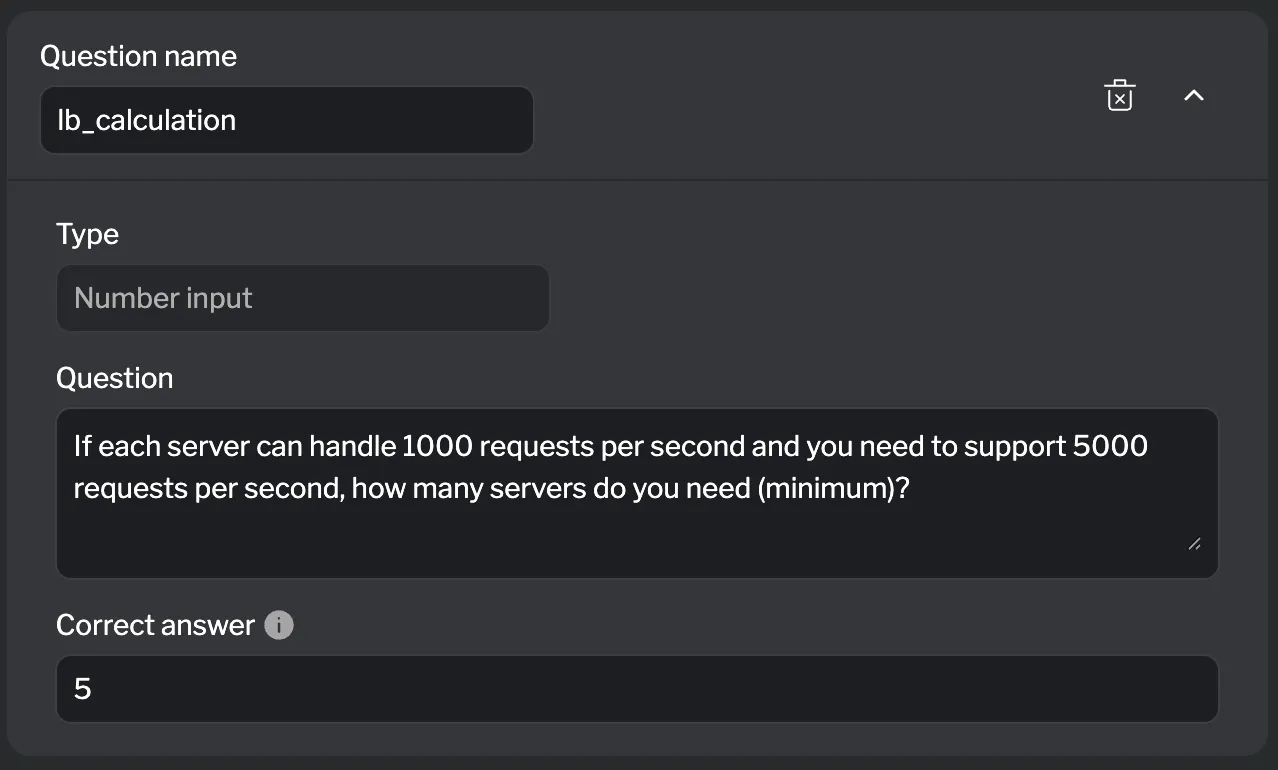
| Field | Description |
|---|---|
| Question name | Internal identifier for the question. |
| Question | The question text users will see. |
| Correct answer | The expected numeric value. |
Adding answers: Enter the correct numeric value.
Hints help guide users toward the correct answer without giving it away directly. When you enable the “Show hints” setting in Quiz Settings, you can add multiple hints to each question that are revealed progressively as users attempt and fail the question.
Hints are served in order – the first hint appears after the first failed attempt, the second hint after the second failed attempt, and so on. Consider making each hint progressively more specific to guide the user toward the correct answer.
Adding Hints:
To add hints to a question, the “Show hints” setting must be enabled in Quiz Settings. When editing a question in the quiz drawer, click the Add a hint button to create a new hint. You can add as many hints as needed for each question.
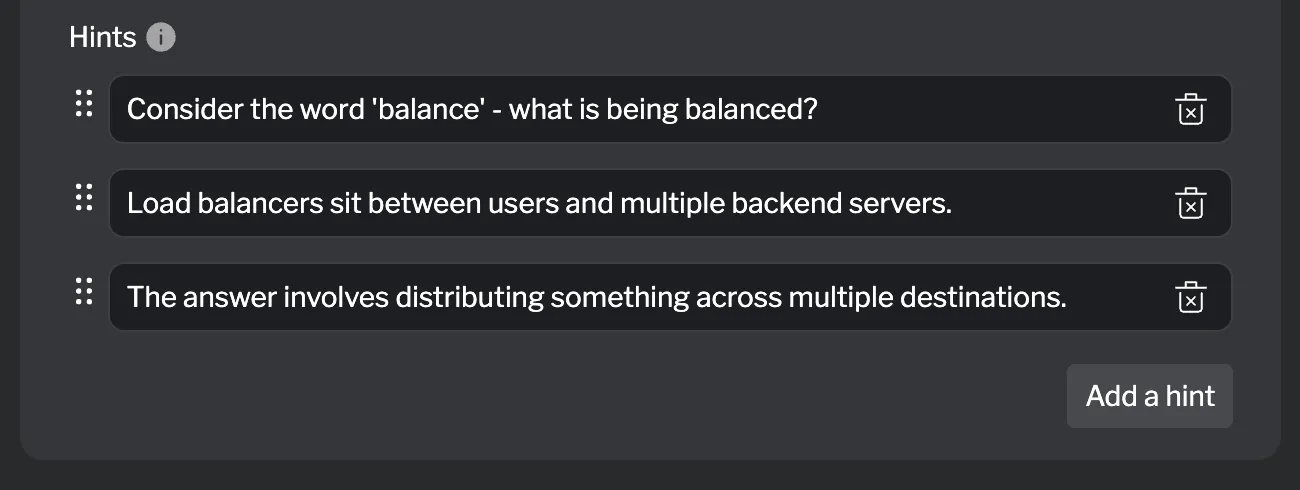
Managing Hints:
- Reordering: Click and drag the handle on the left side of each hint to reorder them. Since hints are served sequentially, ensure they progress from general guidance to more specific help
- Deleting: Click the delete button on the right side of a hint to remove it
Best Practices:
- Start with conceptual hints that guide thinking rather than giving away the answer
- Make each subsequent hint more specific and direct
- Keep hints concise and focused on a single aspect of the problem
- Consider adding 2-3 hints per question for optimal guidance
Question Ordering
Section titled “Question Ordering”Questions appear in the order you define them in the quiz drawer. You can reorder questions by dragging them using the drag handle on the left side of each question card.
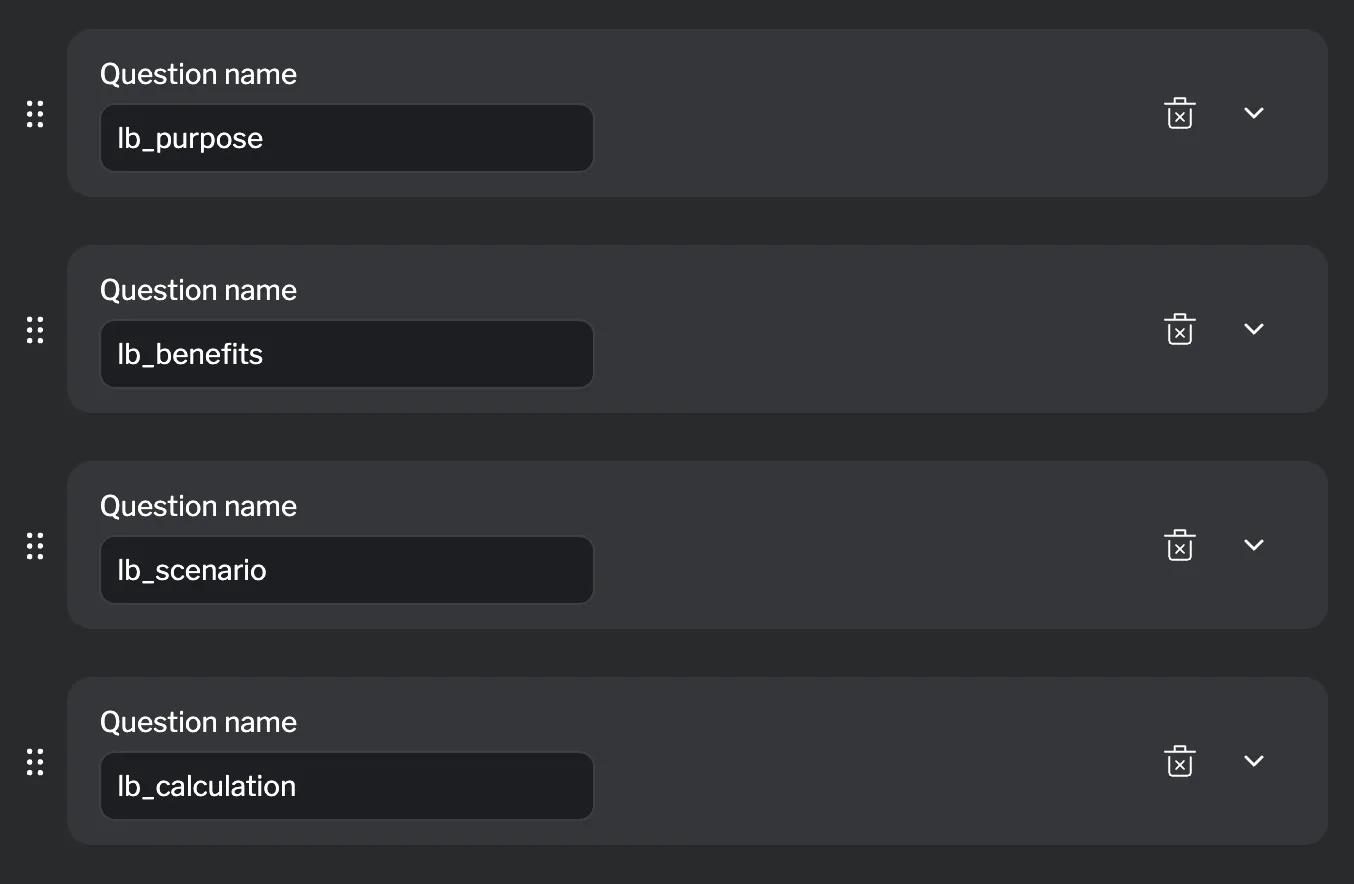
Each question card can be collapsed or expanded. When collapsed, you can quickly see all your questions and rearrange them. Click the chevron icon to expand a question and edit its details.
Editing Quizzes
Section titled “Editing Quizzes”To edit an existing quiz, click on the quiz card in the Activities tab. This opens the quiz drawer where you can modify the quiz name, add or remove questions, reorder questions, and update quiz settings.
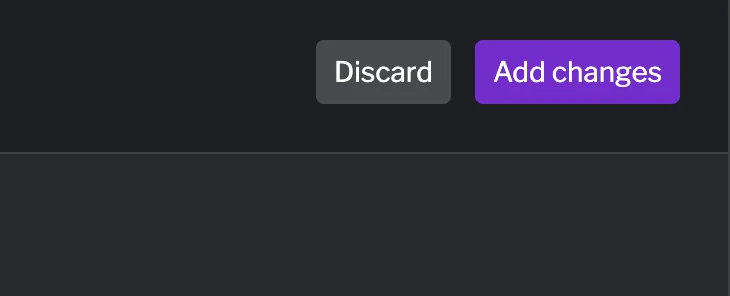
When you’re done making changes, click the Add changes button to save your modifications. If you want to discard your changes, click the Discard button.
Embedding Quizzes in Pages
Section titled “Embedding Quizzes in Pages”Once you’ve created a quiz, you need to embed it in your instruction pages where users will encounter it.
Using the Markdown Editor
Section titled “Using the Markdown Editor”In the Instructions tab, edit the page where you want the quiz to appear. The markdown editor provides a button to insert quiz components.
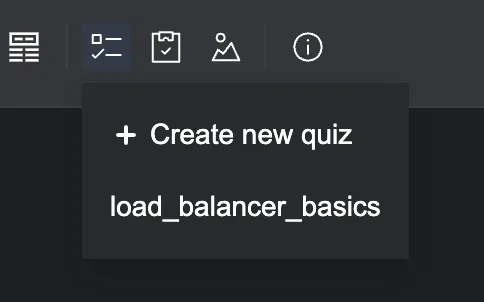
Click the quiz icon button (or use the insert menu) to see available quizzes. You can either:
- Select an existing quiz to embed it at the cursor position
- Create the missing quiz, which opens the quiz drawer pre-filled with the specified id
The editor inserts a quiz component like this:
<instruqt-quiz id="load_balancer_knowledge"></instruqt-quiz>The id must match the internal name of a quiz defined in your Activities.
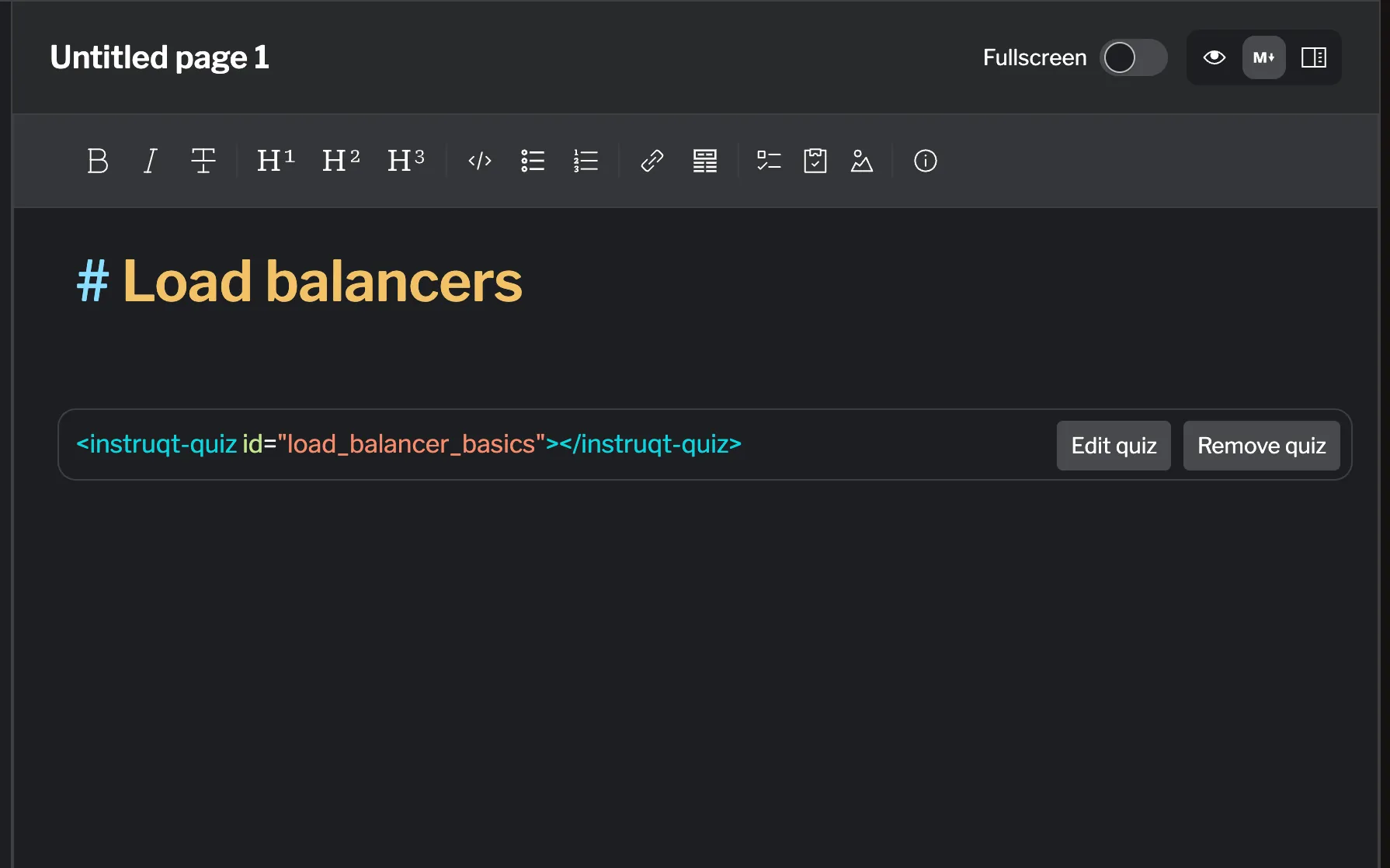
Managing Quiz Components
Section titled “Managing Quiz Components”Once inserted, quiz components show inline controls:
- Edit: Opens the quiz drawer to modify questions and settings
- Delete: Removes the quiz from the page (it won’t delete the quiz from the Activities)
Non-Existent Quizzes
Section titled “Non-Existent Quizzes”If you reference a quiz that doesn’t exist, the editor shows a warning indicator with options to:
- Remove the reference from the markdown
- Create the missing quiz, which opens the quiz drawer pre-filled with the specified id
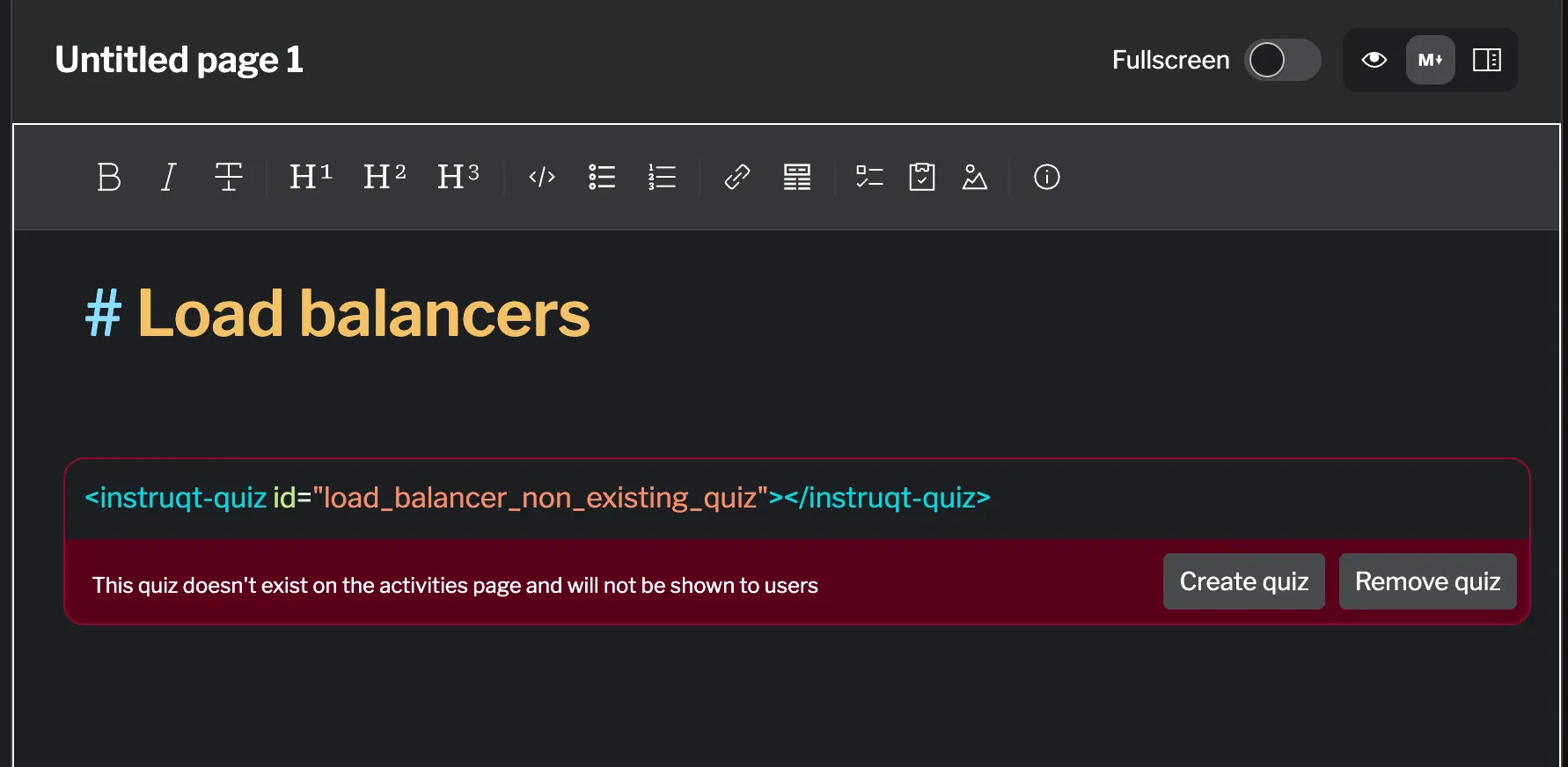
This helps you catch typos or missing quizzes before publishing your lab.
Managing Quiz Usage
Section titled “Managing Quiz Usage”The Activities tab shows which pages each quiz is used on, helping you understand how quizzes are distributed throughout your lab.
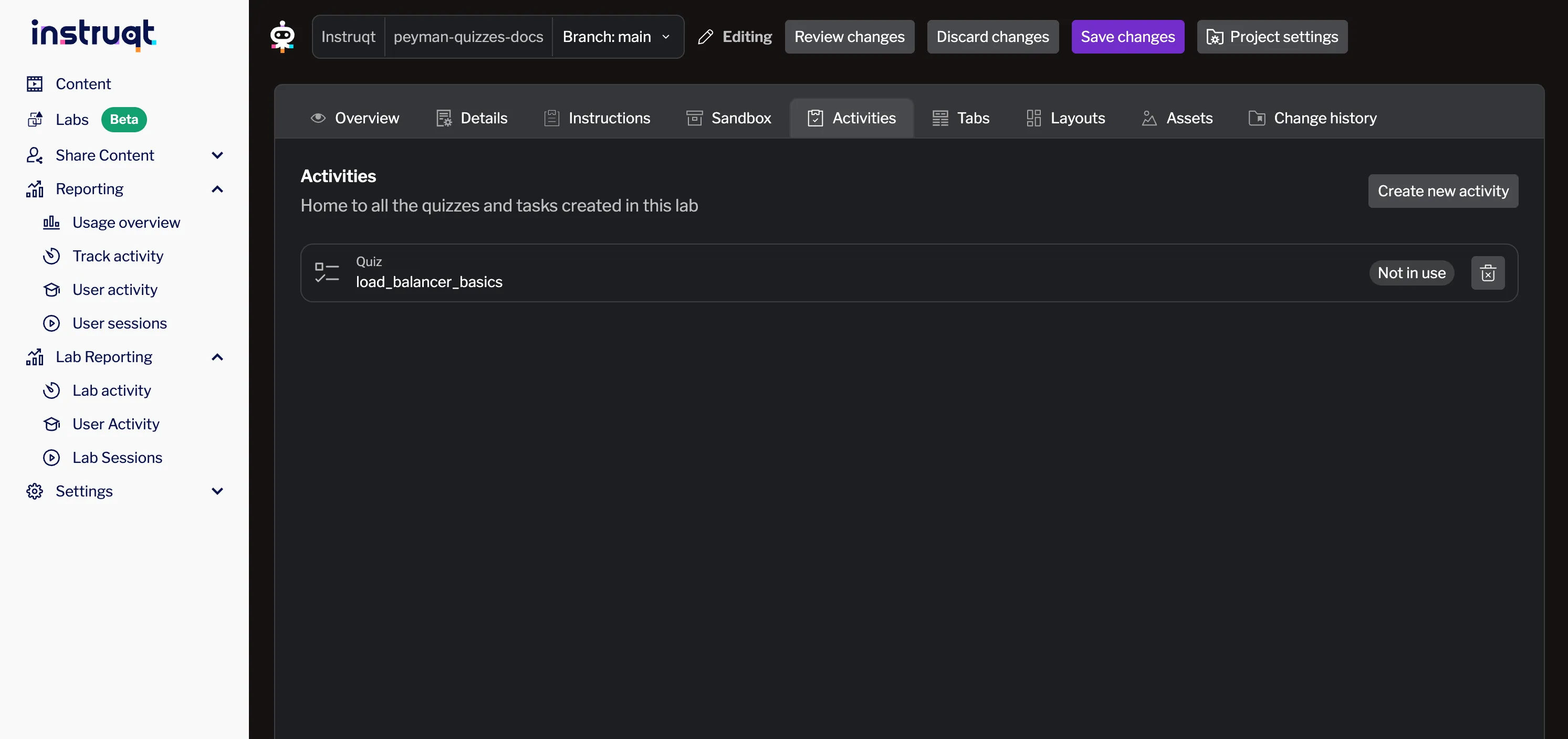
Quizzes without usage appear with an indicator, making it easy to identify unused assessments that might need to be added to pages or removed entirely.
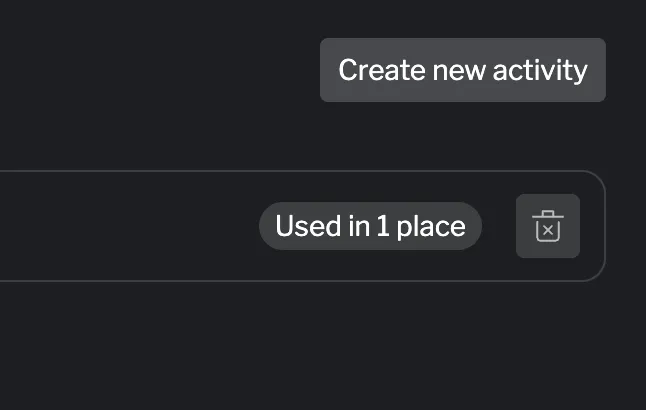
Click on the “Used in 1 place”, which displays the page embedding this quiz.
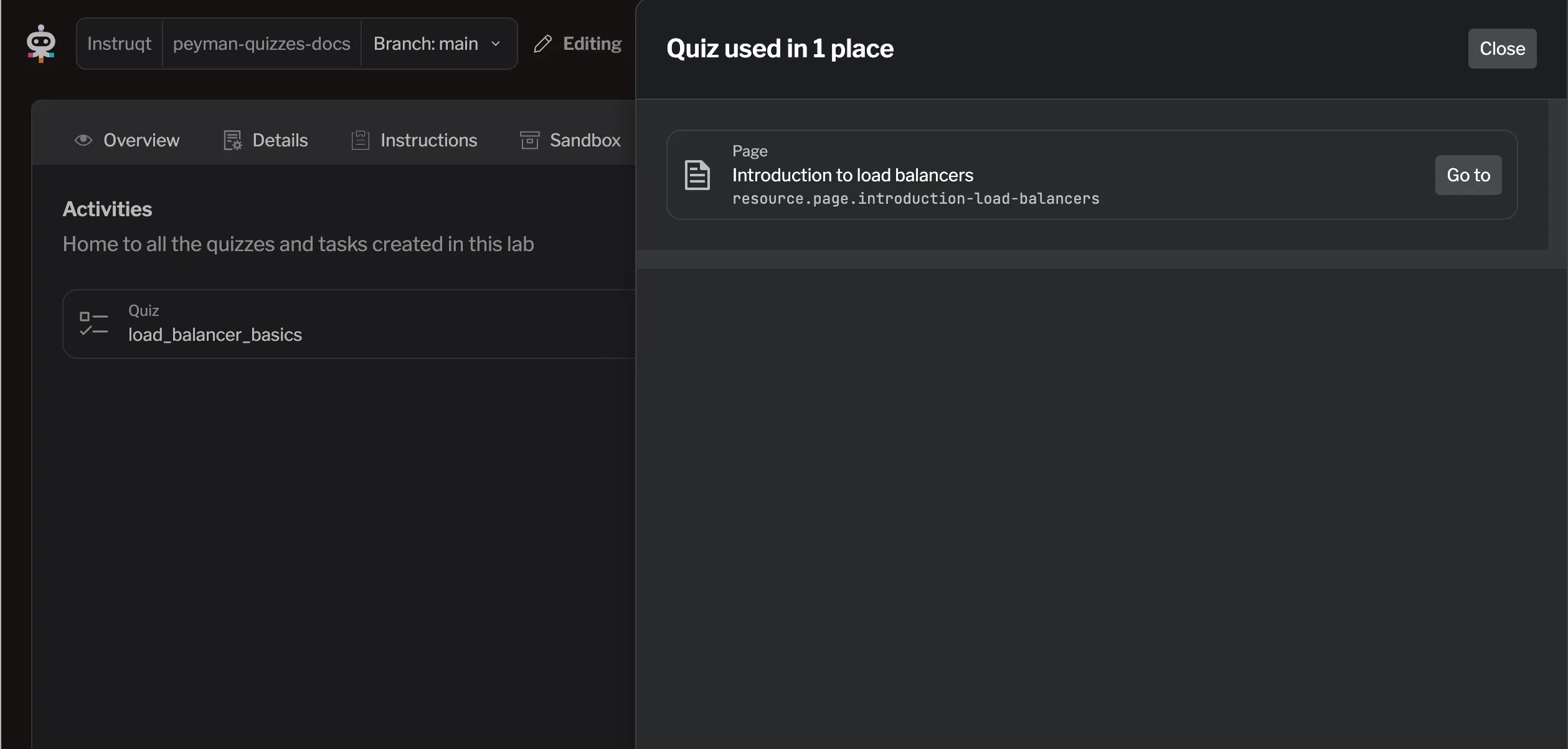
This is particularly useful when:
- Updating quiz content: See which pages will be affected by your changes
- Removing quizzes: Verify no pages reference it before deletion
- Organizing content: Understand how assessments flow through your lab structure
Deleting a Quiz
Section titled “Deleting a Quiz”You can delete a quiz from the Activities tab by clicking the delete button on the quiz card. When you delete a quiz, a confirmation dialog appears to prevent accidental deletion.
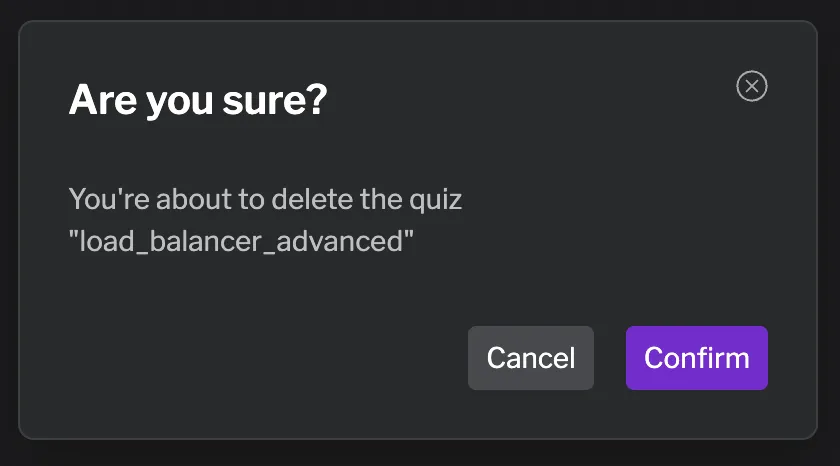
However, you cannot delete a quiz that’s currently being used in your lab. If the quiz is embedded in one or more pages, the delete button will be disabled and show a tooltip message.
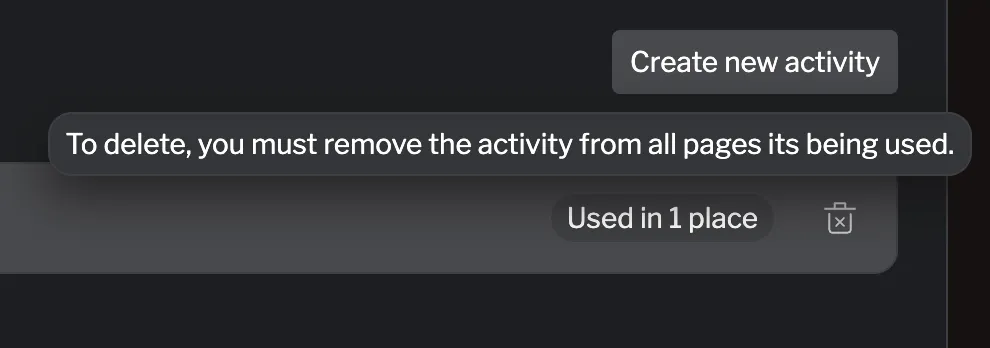
To delete a quiz that is in use:
- Navigate to the quiz in the Activities tab
- Click on the usage indicator (e.g., “Used in 1 place”) to see which pages reference it
- Remove the quiz component from the page shown in the usage drawer
- Return to the Activities tab and delete the quiz
This protection prevents breaking your lab by accidentally removing quizzes that users would encounter.
Summary
Section titled “Summary”Quizzes transform passive content consumption into active knowledge assessment. By testing conceptual understanding at multiple levels, they help users internalize what they’ve learned and identify gaps in their knowledge.
Key points to remember:
- Create quizzes in the Activities tab with clear names and well-designed questions
- Use multiple question types to assess different kinds of understanding
- Embed quizzes in pages using the markdown editor’s quiz button
- Configure hints, answers, and attempts based on your learning objectives
For detailed information about creating tasks, see the Tasks documentation. For an overview of how activities work together, see the Activities overview.
